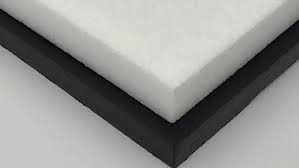Abstract
Expanded polypropylene (EPP) and expanded polyethylene (EPE) foams are widely used in industries ranging from automotive to packaging due to their lightweight, energy-absorbing, and insulating properties. While both materials share similarities as polymer-based foams, their distinct chemical compositions and structural characteristics lead to significant differences in performance, applications, and sustainability. This article provides a detailed analysis of EPP and EPE foams, exploring their properties, manufacturing processes, industrial applications, and environmental impacts to guide engineers, designers, and manufacturers in material selection.
Polymer foams are cellular materials consisting of a polymer matrix filled with gas-filled pores. Their lightweight nature, energy absorption, and thermal insulation capabilities make them indispensable in modern engineering. Among these, EPP and EPE foams stand out due to their versatility. However, their differences in material composition and performance metrics necessitate a deeper understanding for optimal application.
EPP foam is a high-performance material derived from polypropylene. Its closed-cell structure and cross-linked polymer chains contribute to exceptional mechanical and thermal properties:
High Impact Resistance: EPP absorbs energy efficiently during collisions, making it ideal for automotive bumpers and safety equipment39.
Temperature Stability: Retains structural integrity between -40°C and 130°C, suitable for extreme environments3.
Chemical and Oil Resistance: Inert to most chemicals and oils, ensuring durability in industrial settings3.
Lightweight yet Durable: Combines low density with high strength-to-weight ratios, critical for aerospace and automotive lightweighting13.
Recyclability: Fully recyclable, aligning with circular economy goals39.
EPE foam, commonly known as "pearl cotton," is produced from low-density polyethylene (LDPE). Its structure features independent air-filled bubbles, offering distinct advantages:
Superior Flexibility and Cushioning: High rebound rate and softness make it ideal for packaging fragile items39.
Moisture and Corrosion Resistance: Resists water, acids, and alkalis, ensuring longevity in humid environments34.
Thermal Stability: Maintains integrity across a wide temperature range (-60°C to 80°C) without cracking or melting3.
Eco-Friendliness: Produced without harmful chemicals and recyclable, though less durable than EPP34.
Key Comparison:
| Property | EPP Foam | EPE Foam |
|---|---|---|
| Density | Low to moderate | Very low |
| Impact Resistance | Excellent | Moderate |
| Temperature Range | -40°C to 130°C | -60°C to 80°C |
| Recyclability | High | Moderate |
| Cost | High | Low |
EPP is manufactured through a steam-based molding process:
Pre-Expansion: Polypropylene beads are expanded using steam to form low-density particles.
Molding: Beads are fused in a mold under high pressure and heat, creating complex shapes39.
This method allows for precise control over density and geometry, enabling customized solutions for automotive and aerospace components1.

EPE is produced via extrusion:
Melting and Mixing: LDPE resin is melted and mixed with blowing agents.
Foaming: The mixture is extruded, forming a continuous sheet with closed-cell bubbles49.
EPE machines, such as those from Jinlida Machinery, emphasize high foaming ratios and automation to reduce costs4.
Process Contrast:
EPP requires energy-intensive steam molding, increasing production costs.
EPE’s extrusion process is faster and cheaper, favoring mass production of packaging materials.
Automotive: Bumpers, dashboards, and child safety seats (e.g., high-end models use EPP for superior crash protection)215.
Aerospace: Lightweight insulation panels and cargo liners3.
Consumer Goods: Reusable packaging for electronics and medical devices9.
Packaging: Protective wraps for furniture, electronics, and fragile goods49.
Construction: Insulation sheets for temperature and sound control3.
Sports Equipment: Padding in helmets and yoga mats due to softness2.
Sector-Specific Preferences:
EPP dominates high-stress applications (e.g., automotive safety), while EPE thrives in cost-sensitive, high-volume packaging39.
EPP: Fully recyclable and reusable, reducing landfill waste. However, high energy consumption during production offsets some benefits39.
EPE: Recyclable but less durable; degraded after multiple cycles. Its low-toxicity production process minimizes environmental harm4.
EPP: Higher material and manufacturing costs limit it to premium applications23.
EPE: Economical production and raw materials make it ideal for disposable packaging4.
EPP: Growing adoption in electric vehicles (EVs) for battery insulation and lightweight structural components1.
EPE: Development of bio-based polyethylene foams to enhance sustainability4.
EPP and EPE foams cater to divergent industrial needs. EPP excels in high-performance, durable applications, whereas EPE offers affordability and flexibility. Material selection should balance mechanical requirements, environmental goals, and budget constraints. As industries prioritize sustainability, advancements in recycling technologies and bio-based polymers will further differentiate these materials.
